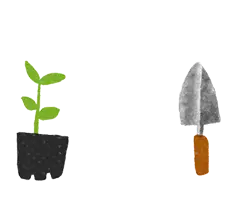Part 9Roads
Damage to and nuisances on roads
133Removal of trees, hedges, etc, that obscure visibility or interfere with a public work
In this section and in sections 134 and 135, unless the context otherwise requires,—
authority, in relation to a public work, means—and, in relation to a road, means the authority having control of the road
- any Minister of the Crown who is responsible for the work, where the work is a Government work:
- the local authority which has financial responsibility for the work, where the work is a local work—
cut down, in relation to any tree, hedge, or shrub, includes the total removal of the tree, hedge, or shrub
road includes a motorway, access way, and service lane.
- any Minister of the Crown who is responsible for the work, where the work is a Government work:
The authority may require the owner or occupier of any land adjoining a road or public work to do any of the following things:
- to cut down, lower, or trim any tree, hedge, or shrub that is overhanging or overshadowing a road to such an extent as to damage the road, or to endanger or obstruct the lawful use of the road, or to be detrimental to the maintenance of the road and any associated drainage system:
- to cut down, lower, or trim any tree, hedge, or shrub, or remove any debris, if parts of it may be blown on to any road or public work or if it may otherwise interfere with the lawful use of the road or any public work:
- to cut down, lower, or trim any tree, hedge, or shrub on any land that is in such a position that it interferes with or is damaging, or is likely to interfere with or damage, any road or public work or the construction, operation, or maintenance of any road or public work:
- to cut down or grub up, and remove any tree, hedge, or shrub that is obstructing a road or its drainage system owing to the growth of any vegetation or the spreading of roots upon or under the road up to its middle line:
- to cut down, lower, or trim any tree, hedge, or shrub, or to lower or remove any wall, fence, or other structure, that in the opinion of the authority wholly or partially obscures visibility at any bend of a road, or at any road or railway crossing, or at any road intersection, or that causes any danger to the traffic on any road:
- to remove any structure that encroaches either wholly or partially on to a road or on to any land used for a public work, unless the encroachment has been authorised under section 129 and notice of termination has not been issued.
Within 10 working days after service of a notice under subsection (2), the owner or occupier may apply to the District Court nearest to the land for an order setting aside the notice.
A copy of any such application shall be served on the authority either before or immediately after it is lodged with the court.
The Registrar of the court shall give notice of the time and place fixed for the hearing of the application to the applicant and the authority, and they shall be entitled to be present and to be heard, either personally or by their counsel or by an officer of the authority.
On hearing the application, the court, whose decision shall be final, shall determine whether the notice should or should not be set aside, and in the former case the notice shall be deemed to be void.
Every person on whom a notice has been served under this section commits an offence against this Act if he fails to comply with the requirement contained in the notice within 1 month after—
- the expiry of the time in which application may be made to a court, if he has not exercised that right; or
- the date of the court's order, if an application to set aside the notice has been made and it has not been set aside; or
- the date on which any application to the court has been withdrawn by the applicant—
All costs and expenses incurred by an authority in carrying out any work under subsection (7) may be recovered from the person who failed to comply with the requirement as a debt due to the authority.
The power of entry conferred by subsection (7) may be exercised in addition to or instead of the filing of a charging document for an offence under that subsection.
Compare
- 1928 No 21 ss 169, 170, 171
- 1948 No 39 s 32
Notes
- Section 133(1) authority paragraph (a): substituted, on , by section 36 of the Public Works Amendment Act 1988 (1988 No 43).
- Section 133(7): amended, on , by section 413 of the Criminal Procedure Act 2011 (2011 No 81).
- Section 133(9): amended, on , by regulation 3(1) of the Criminal Procedure (Consequential Amendments) Regulations 2013 (SR 2013/409).


